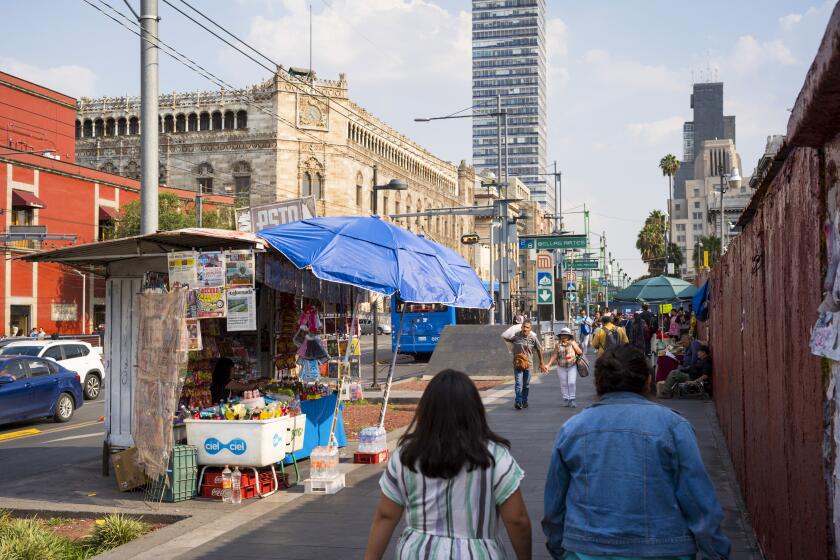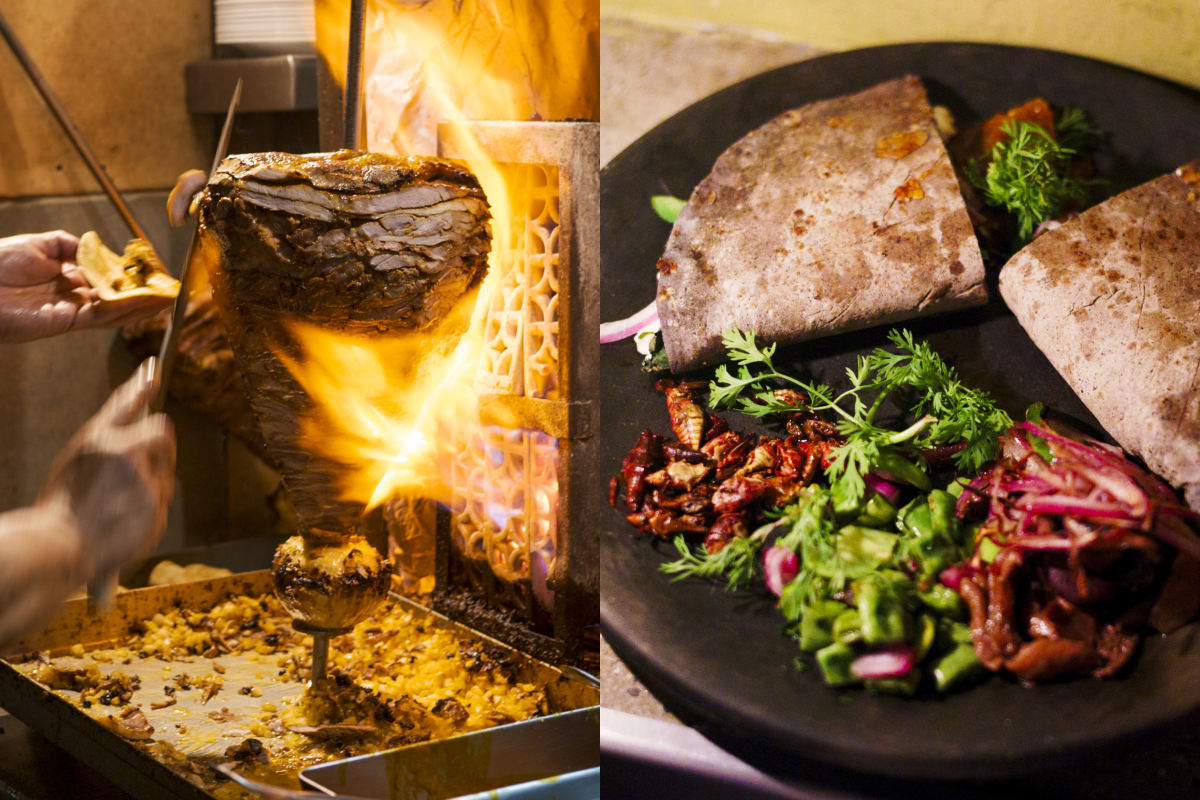
The best tacos, cantinas, pulque and classic restaurants in Mexico City
- Share via
The first day I visited Mexico City, my host picked me up at the airport with a paper sign and took me directly to the enormous wholesale market Central de Abastos, which is about the size of 600 football fields. There, I tried my first barbacoa taco, tender and aromatic, and a bowl of barbacoa broth, from a tarped stall in the middle of everything. The goat was cooked in banana leaves right there in a ditch in the ground before us. That initial experience was utter sensory overload and a complete refutation to everything I thought I knew about Mexican food, and the art of eating itself. I knew there would be no turning back.
Everyone has a city they consider a second home, and “D.F.,” as I still call it, is that city for me. I wrote a book about the experience called “Down & Delirious in Mexico City” and hosted food videos from Mexico for Vice Media that I still get messages about nearly a decade later. These incursions in the culture gradually led to more and more friends and perfect strangers asking me for tips on what to eat and do when they decide to visit.
My answer is always the same: The secret to having a healthy and satisfying relationship to a place as infinite as Mexico City is to find your own favorite things and hold onto them dearly.
Readers share their favorite places to eat, drink and visit in Mexico City.
That said, everyone has a “list.” That’s your running, messy sheet of restaurants and sightseeing options for your favorite city that you only share with relatives or friends. After years of casually sharing my doc or snippets from it with close friends and family, I’m giving it sunshine and sharing an updated version with all of you — first, with my favorite dining options, and later, with a list of things I love to see and do.
This list is not comprehensive and eschews many of the “hot spots” that might appear in guides elsewhere. Its strength is not its breadth but its specificity: I concentrated most of my life in the Mexican capital in the orbit of its historic core, specifically in Colonia Centro and the barrio around Calle López, where I lived for many years. For eating, I’m not above a lavish white-tablecloth moment or an “elevated” cocktail, yet the truth is I still tend to focus on hardy mainstays, the classics that are beloved by the hard-working locals.
Everyone should have their own favorite taquero, coffee shop, fonda, neighborhood cantina and one or two globally ranked restaurants for that special occasion. The city, again, is unknowable. No two lists of favorites will ever be the same. Here is mine.
Share your favorite things to do and eat in CDMX at this form. We may share your responses later with our readers.
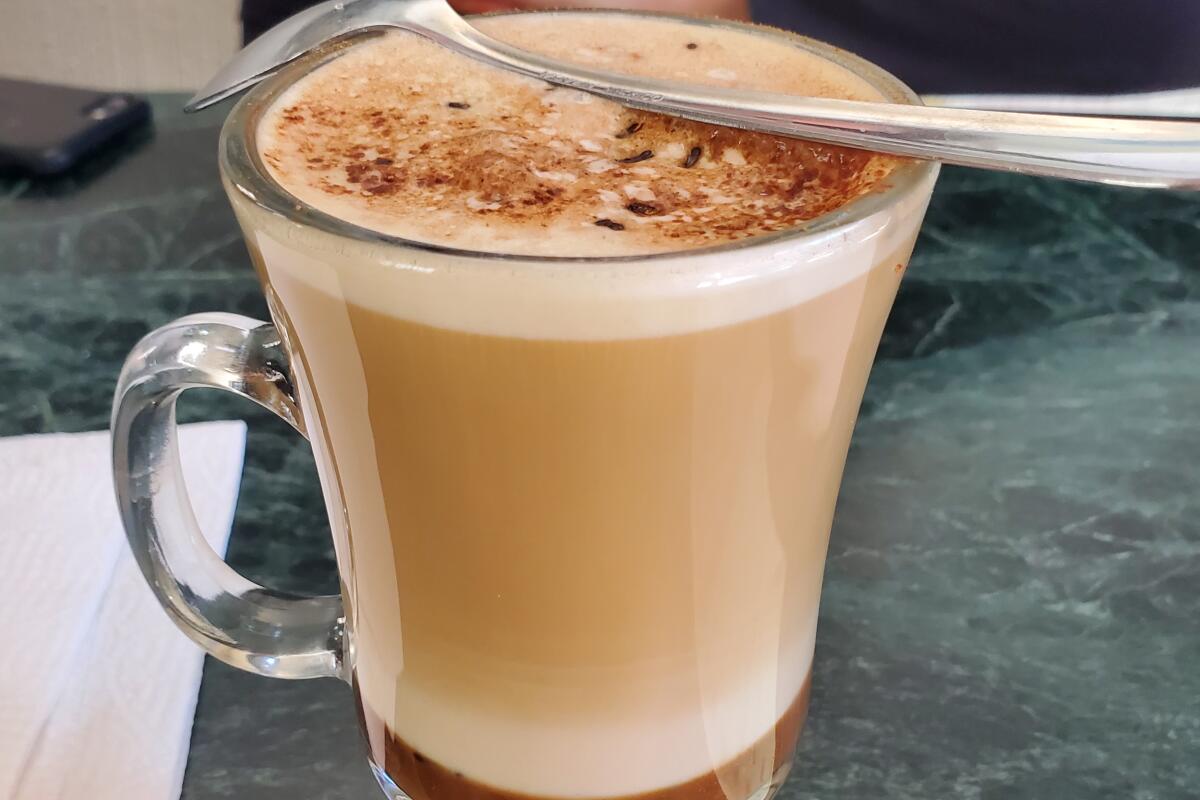
Piccolina
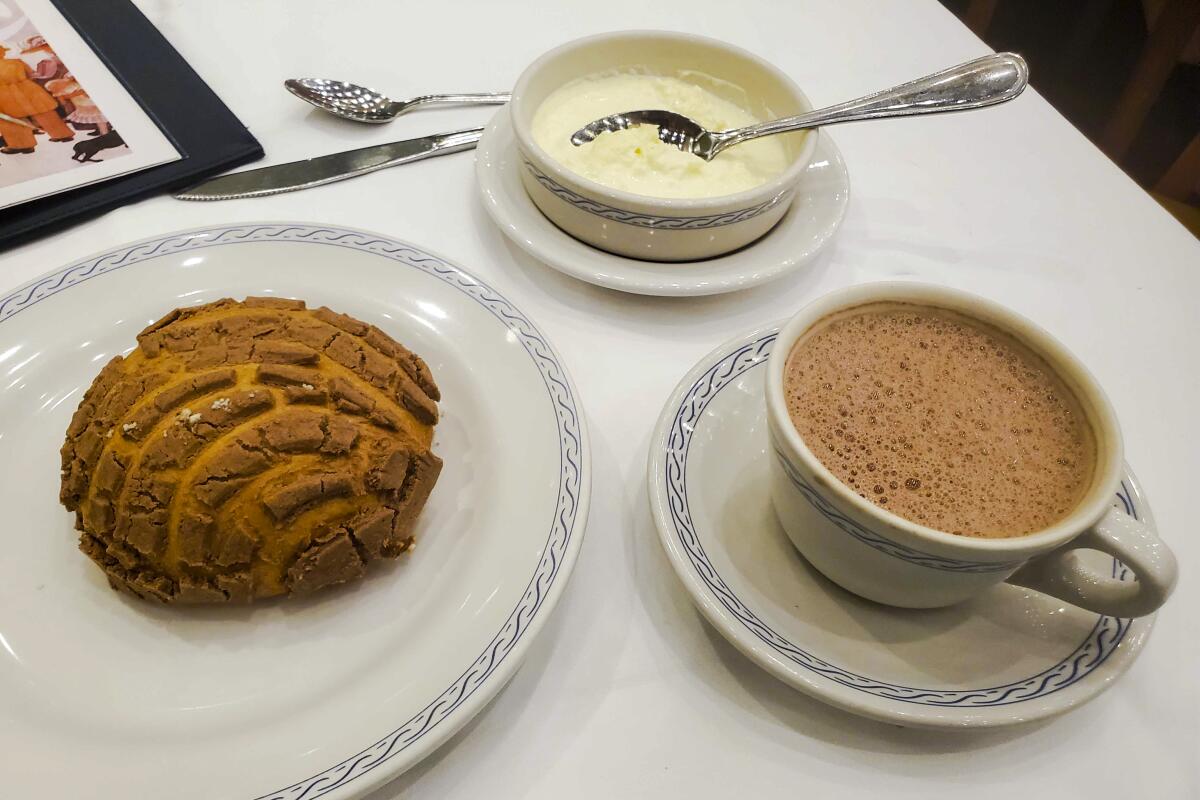
El Cardenal
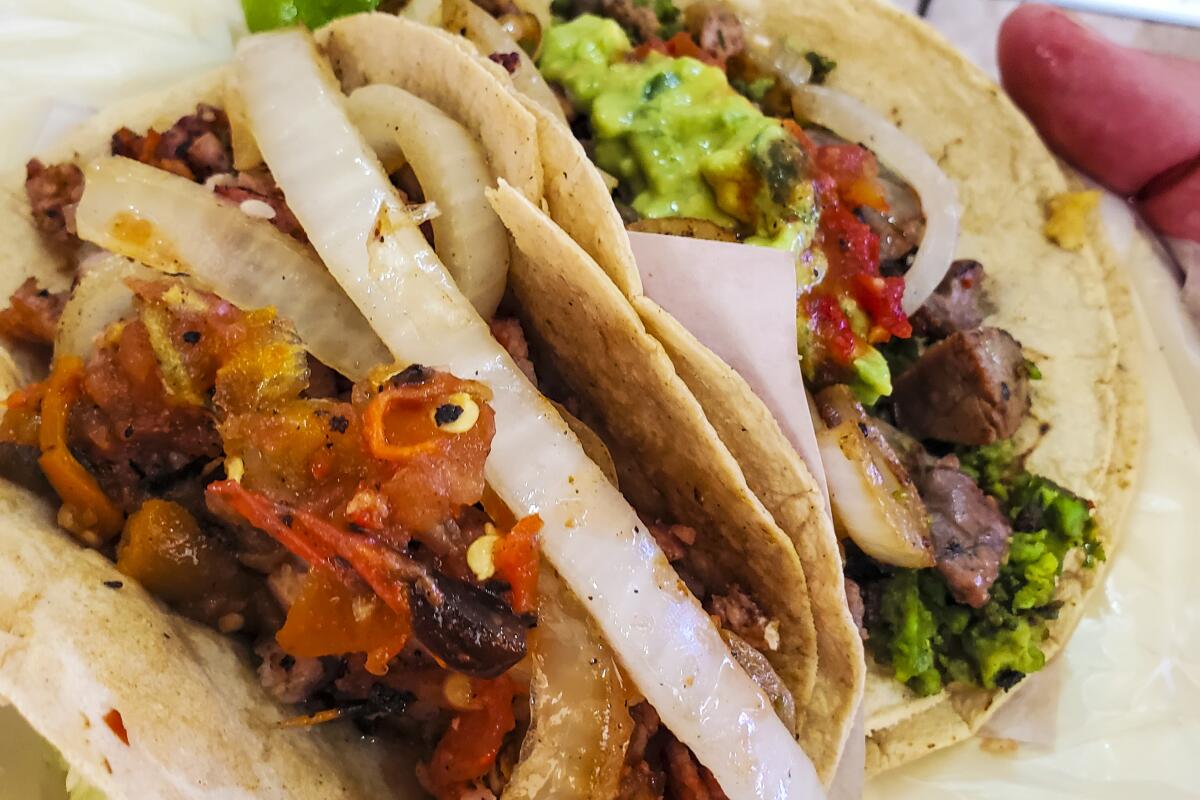
Ricos Tacos Toluca
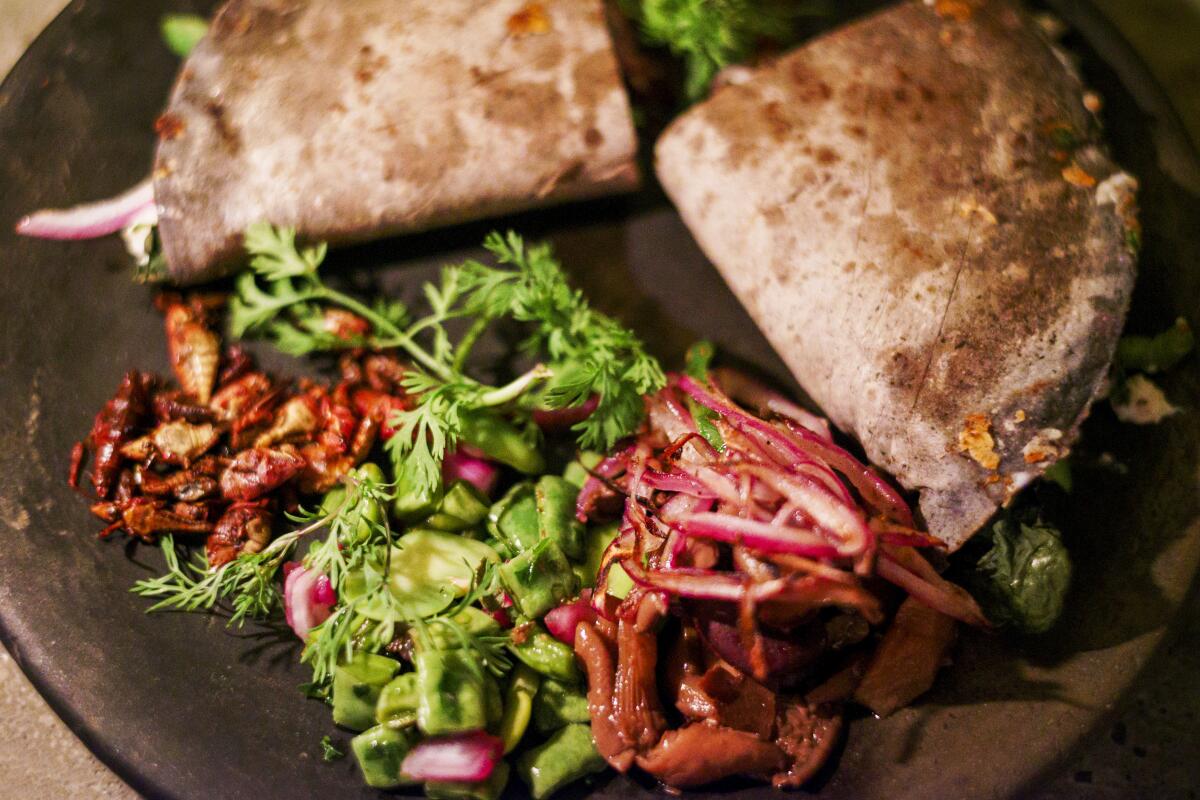
El Bósforo/Sin Nombre
Founder Arturo Dozal would explain to me how he sourced each mezcal meticulously, person-to-person, with maestros from Oaxaca, Guerrero, Durango and other states. I fell in love with many of his offerings of madrecuishe, tepextate, mexicano and especially puntas varieties. Fourteen years later, Bósforo is still going strong, remarkably resilient to its core. Dozal also happens to be an excellent DJ of vintage, pan-Latin vinyl. He spins whenever he’s there or invites neighborhood luminaries during the week, like the vinyl-only master Tropicaza, a die-hard Centro resident for years.
For a while, there was only one item on the menu: a fantastic blue-corn quesadilla of crispy chapulines, queso Oaxaca, fava beans and one full, fragrant hoja santa leaf unifying the whole thing. The Bósforo quesadilla lives on, leading the charge at the “nameless” restaurant that eventually cropped up next door, with a menu that seems to echo the mezcalería’s vibe. Bósforo has no social media, no website. It doesn’t need any. This is where I learned to love mezcal — and my downtown community.
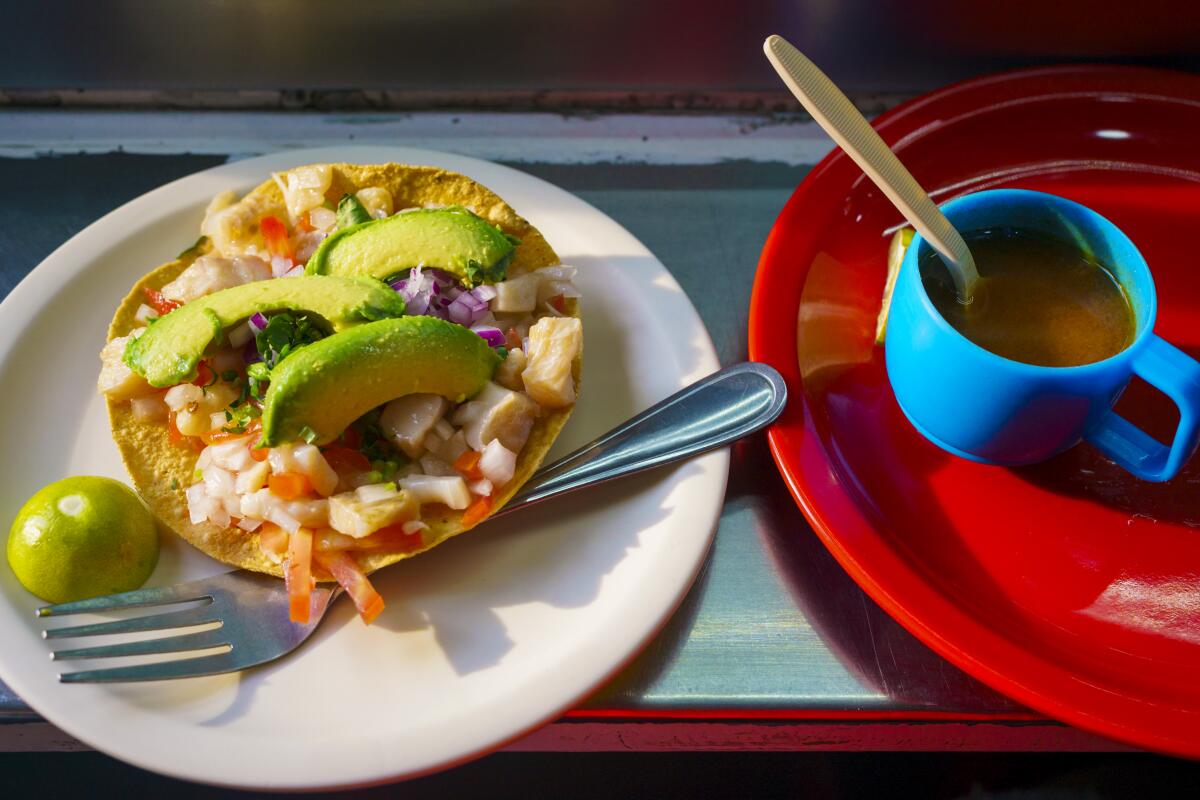
El Caguamo
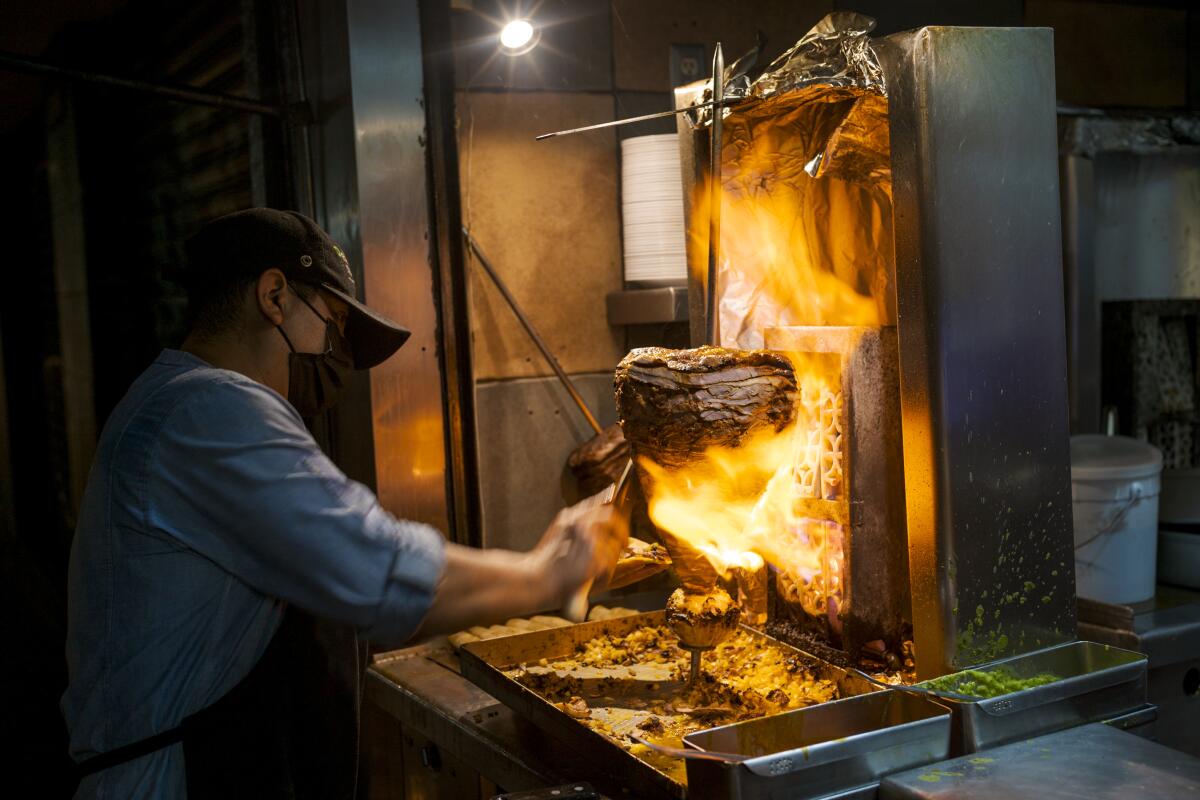
El Huequito
Everyone seems to have strong opinions about who has the best al pastor. I can’t really argue about it. Thousands of trompo spits must be spinning at the same time in this sea of 22 million, around the clock. Who’s to know? Yet everyone can agree that one of the oldest and most nostalgic spots for al pastor is the original location of El Huequito, opened in 1959. A literal hole-in-the-wall, as its name suggests, El Huequito is a place where you’d walk up to a man in a paper butcher’s cap spinning a trompo directly off the sidewalk, and ask for a plate of three for “el huequito,” or the “little space” between meals, while standing. Now the tacos are served inside a former cantina that sits beside the hole-in-the-wall where the original stand once stood. The dark orange salsa de chile de arbol is what deserves all the praise here. El Huequito’s salsa is considered the Mexico City al pastor standard.
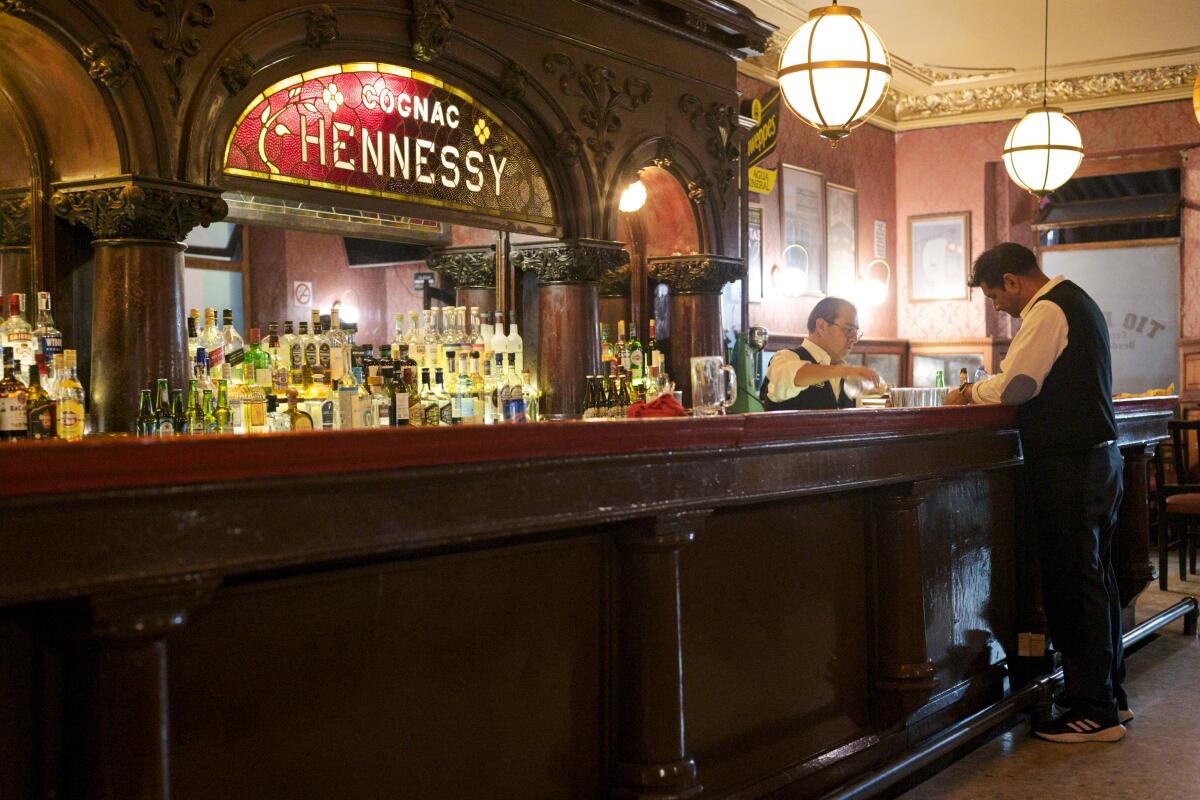
Cantina Tío Pepe
Downtown remains crowded with cantinas that offer wonderful meals as “botana,” the tradition of a course of house-made dishes served as a courtesy, unlimited, as long as you keep drinking and tip extravagantly at the end. I’m keeping my list of botana-serving cantinas to myself for now. However, I do recommend friends stop at least once at Tío Pepe’s to reflect on cantina culture in Mexico City.
Swinging doors that probably have been around since the Mexican Revolution are your portal to what is now considered the oldest cantina in operation, since 1869 or by this name since 1872. Burroughs wrote about it in “Junky,” and like many other cantinas and pulquerías once, women were not allowed inside Tío Pepe until 1982. The bar itself is one of the most spectacular in the city, a deep mahogany edifice with stained glass details and a central panel reading “Hennessy,” the surface slanting here and there with the decades. I duck in alone sometimes between appointments and pony up to the bar, standing, for a tequila and beer. Ask for peanuts.
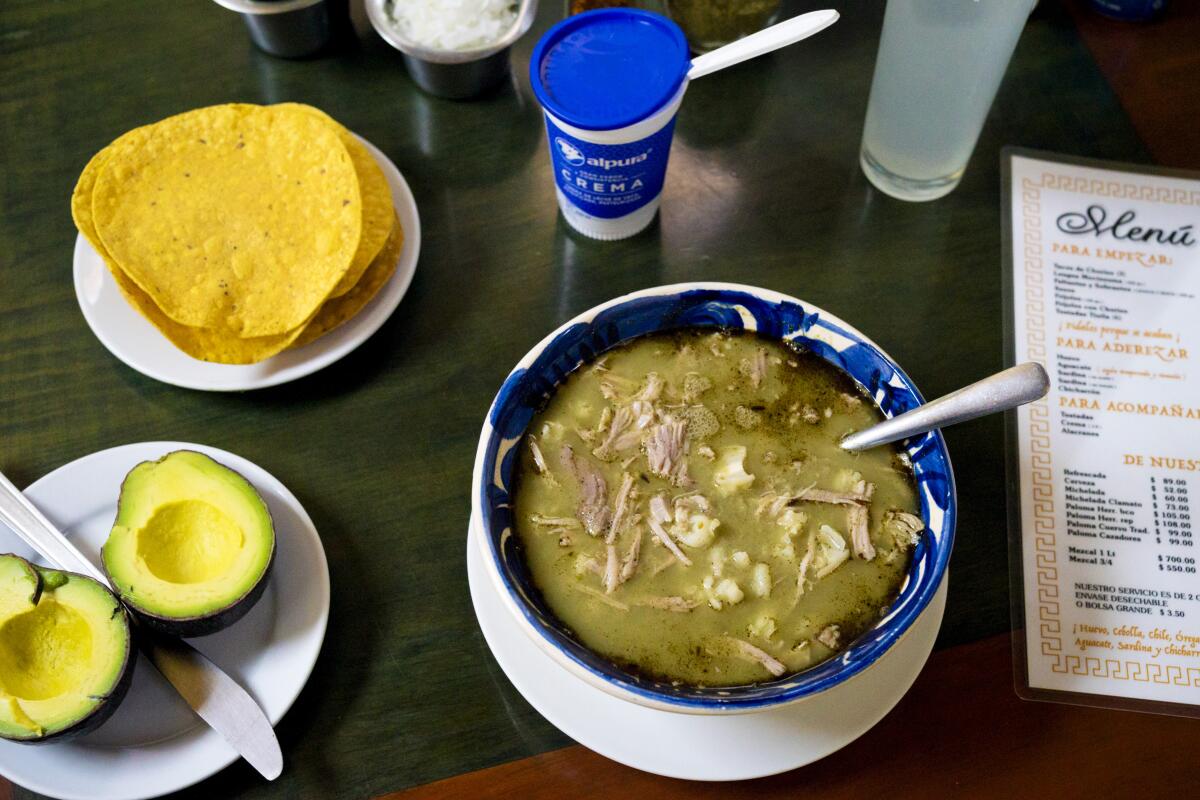
El Pozole de Moctezuma
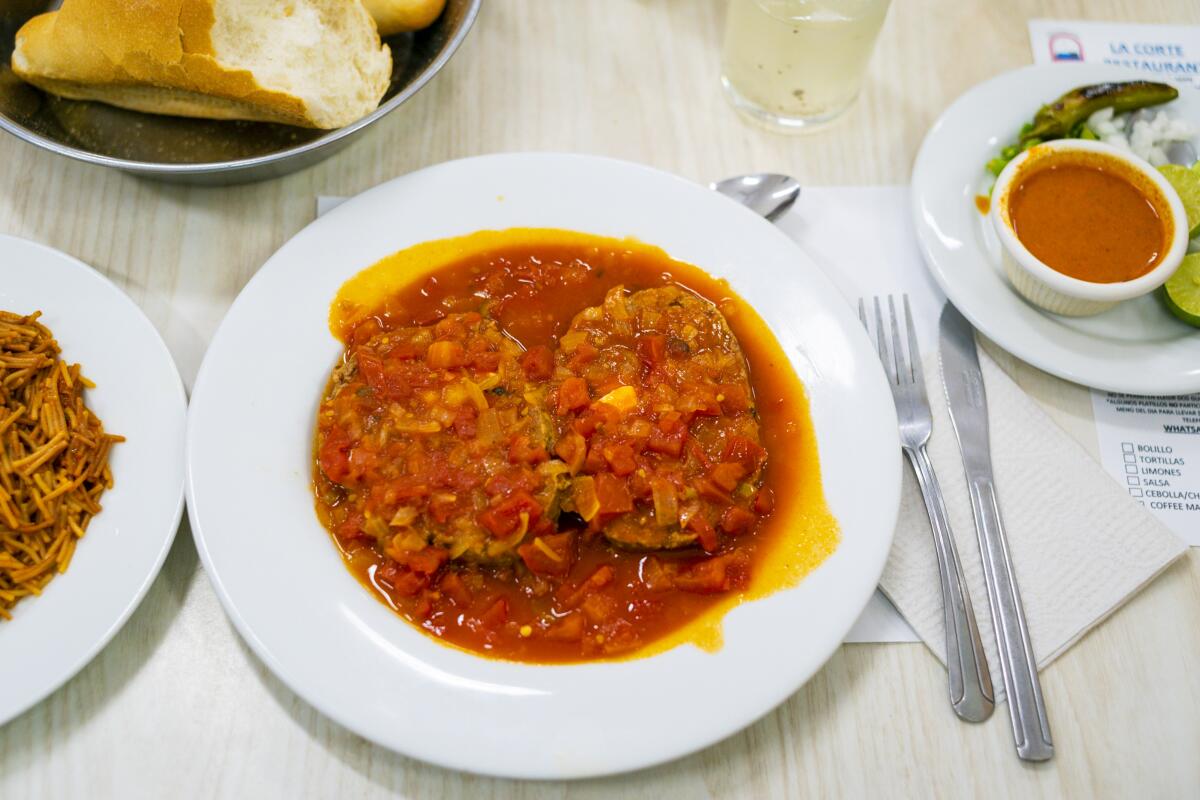
La Corte
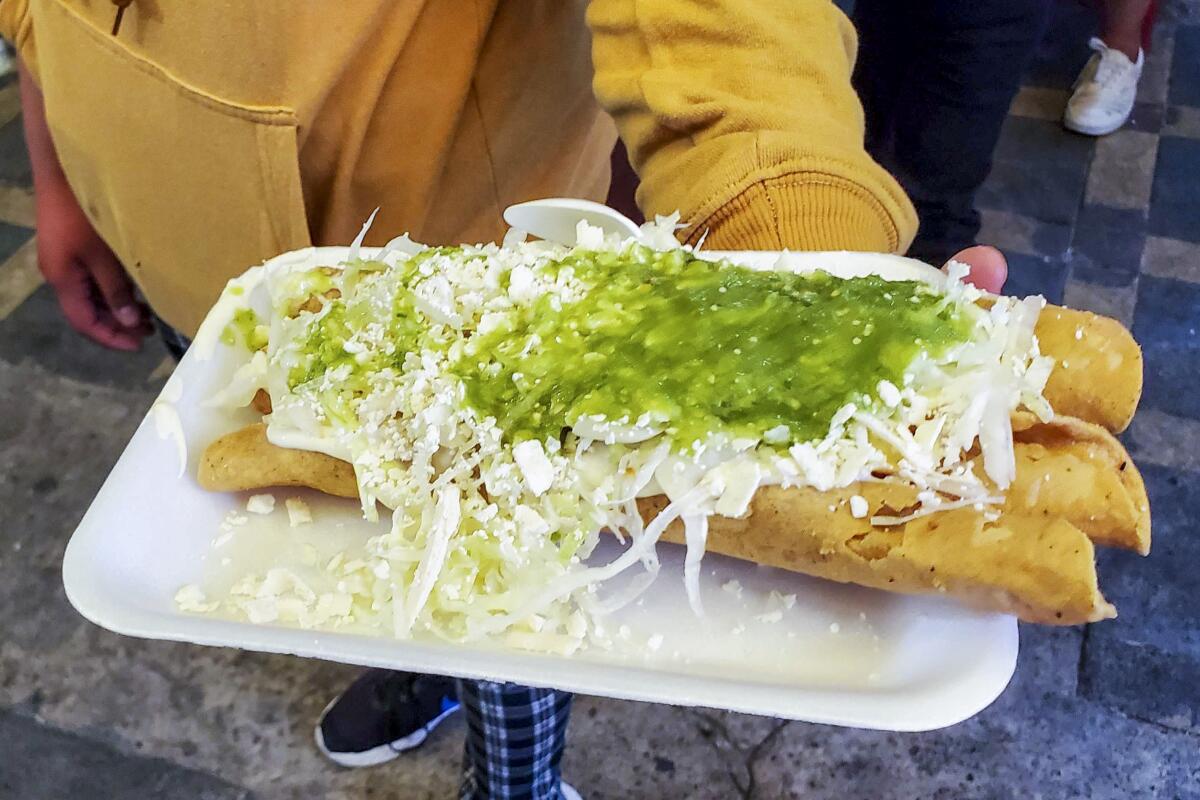
Las Flautas de Mercería Hermi
I got an order, crunched and knew why. Found at a simple frying cart in front of a notions store in a dense, covered alleyway called Pasaje Yucatán, these flautas are tossed on foam plates while still sizzling from the fryer, then drenched in a salsa verde that shows no mercy. The eater wants to keep biting through the flauta, to sort of run through and escape its heat, while the coolness of fresh cream and queso fresco help push one to the finish. You’ll join other diners, largely throngs of no-nonsense discount shoppers with bags draped over their arms, with expressions of contentment and chile-induced heaves, agreeing: This is the perfect flauta.
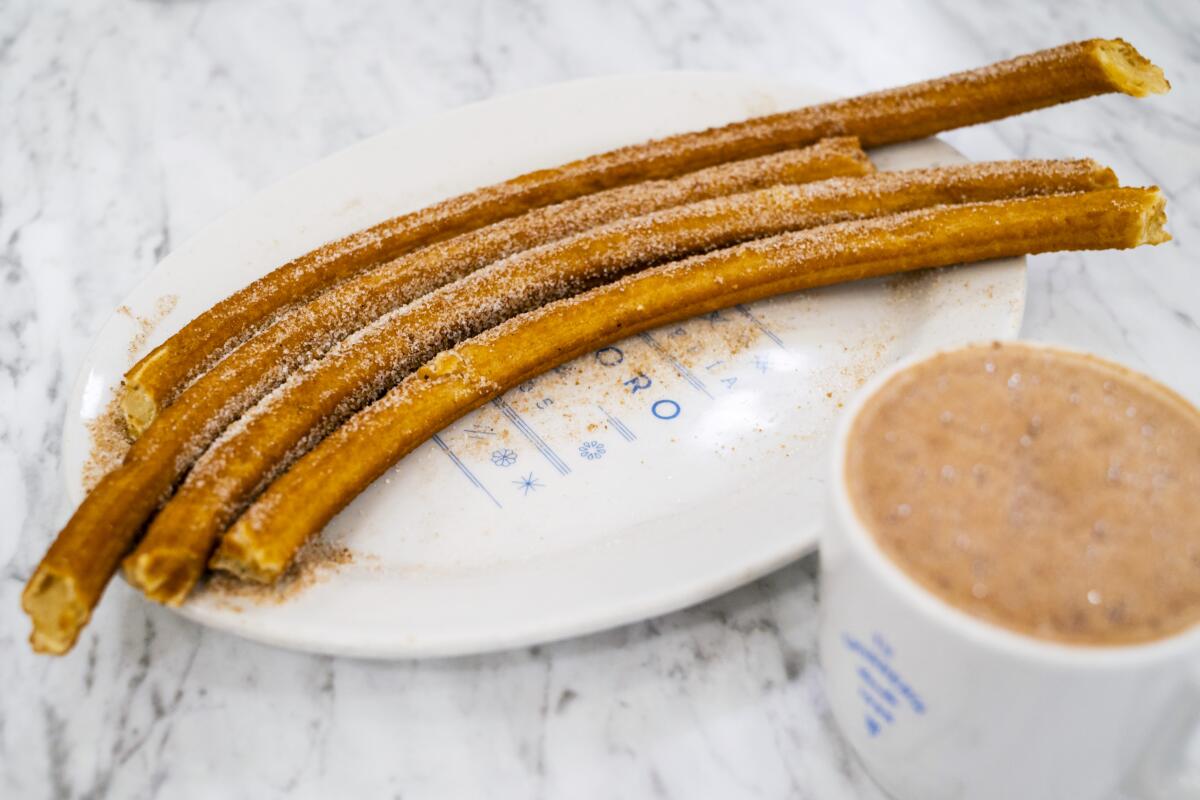
El Moro
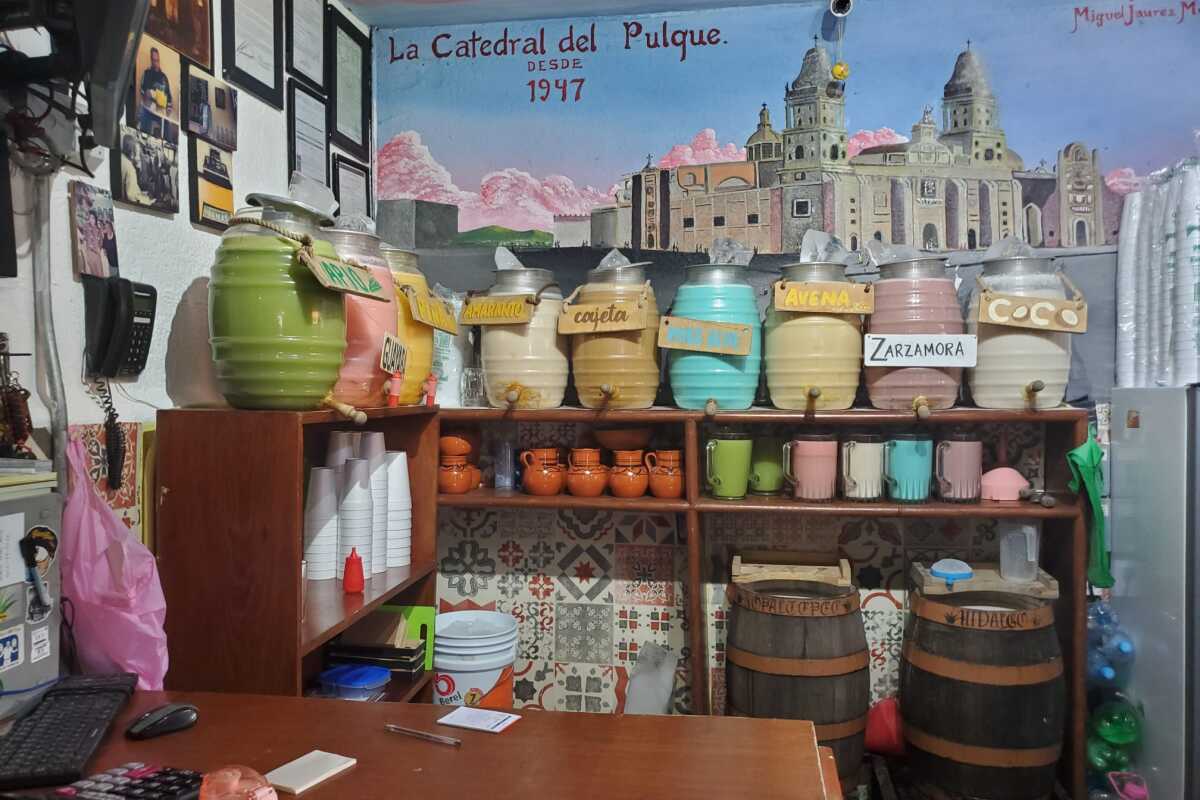
El Salón Casino
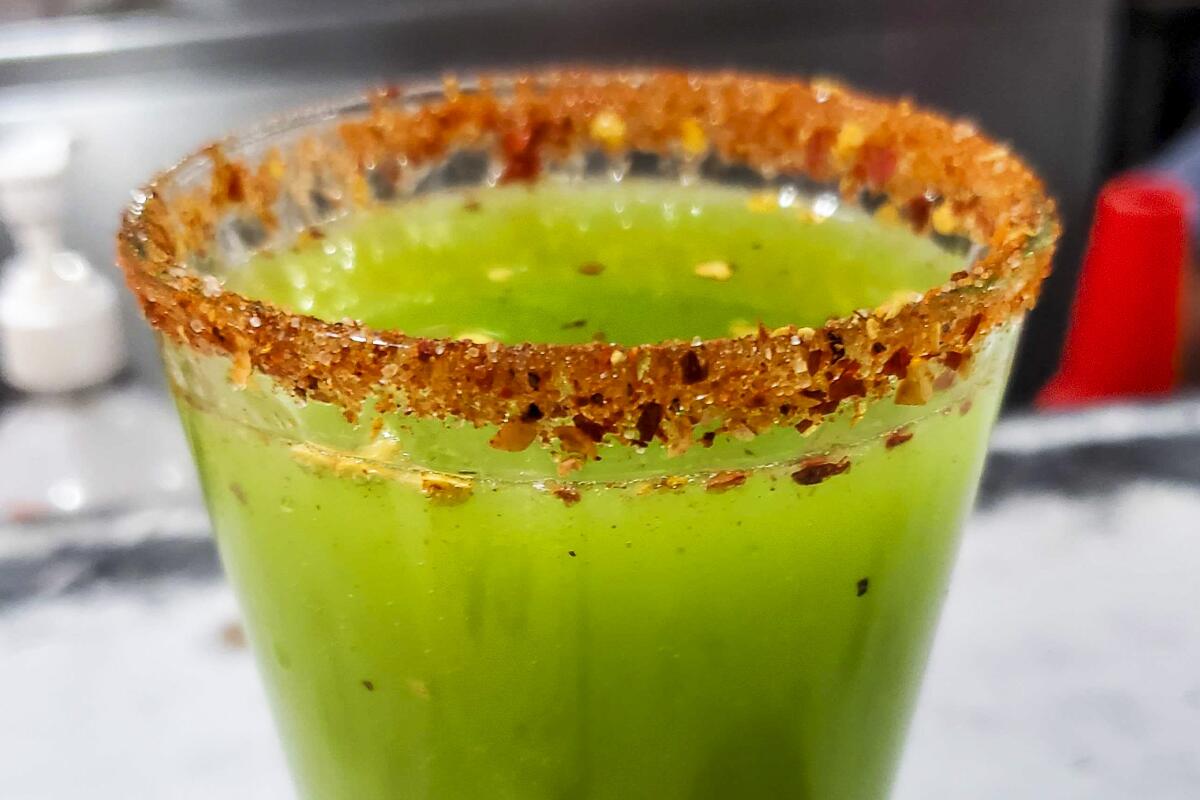
Las Duelistas
Now, you will definitely find fresher pulque out in Texcoco or Xochimilco. And let me reiterate that Las Duelistas is not a place for the over-mannered. The jukebox is scorchingly loud. Foul language (and occasionally foul smells) abound. Yet the rainbow-hued fresco murals draw you in. They were painted by a local punk artist who went by Xuve (who I once commissioned to do a mural in my former apartment). The art sets a vibe that’s ultimately celebratory and convivial. Las Duelistas and its clientele capture the essence of contemporary pulque culture in its rawest, rowdiest form.
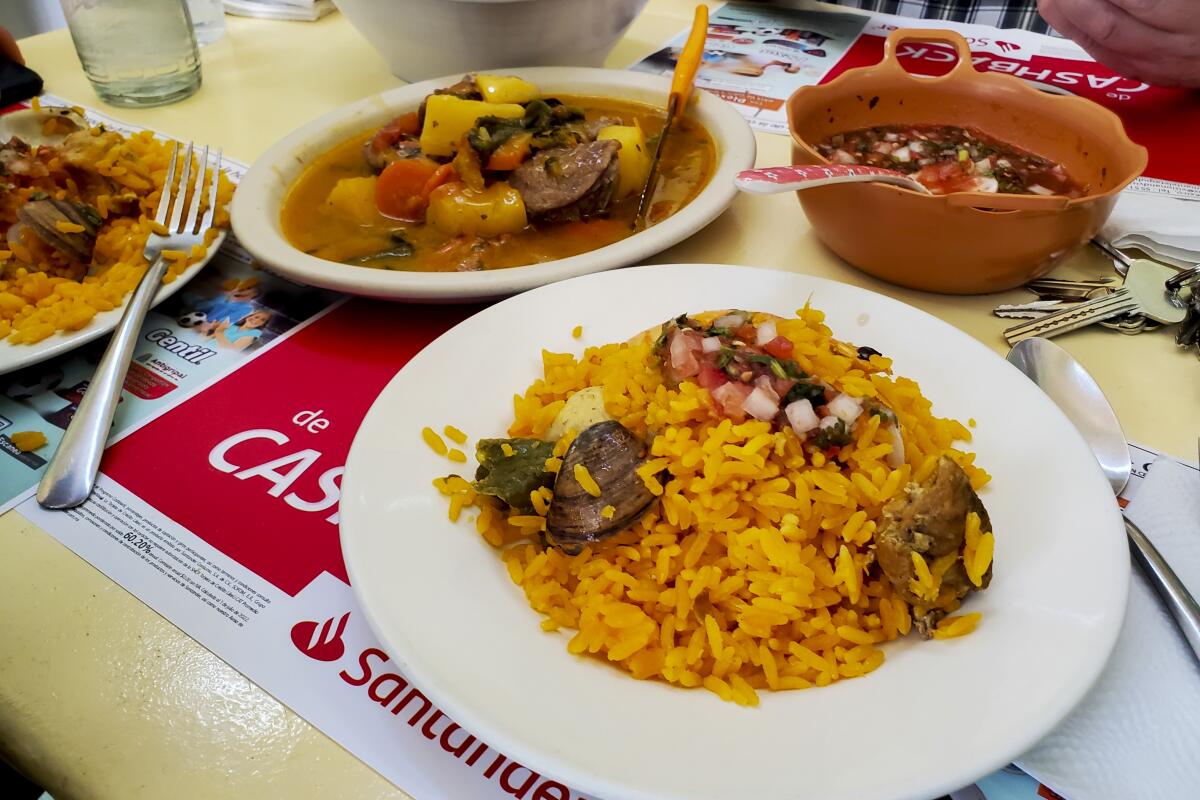
La Paella Valenciana
The paella is served with a mild red salsa, slightly cool, that roots the plate into the neighborhood and sort of transports you back to the 1940s and ’50s. Downtown must have been popping with waves of optimistic Spanish, Lebanese, Jewish, Armenian, Chinese and Anglo and African American expatriate immigrants after World War II. For Christmas and Lent, La Paella Valenciana is an especially busy place, as longtime customers put in orders of bacalao and romeritos for holiday feasts. The estofados and caldo gallego also are satisfying. Otherwise, it’s nice to pop in for a plate of quintessential Mexico City paella. Drench it in the salsa and, between bites, rip into a warm bolillo from the nearby Pilarica Karsapan panadería. Wash it all down with a glass bottle of Mexican Coca-Cola or a local soft drink.
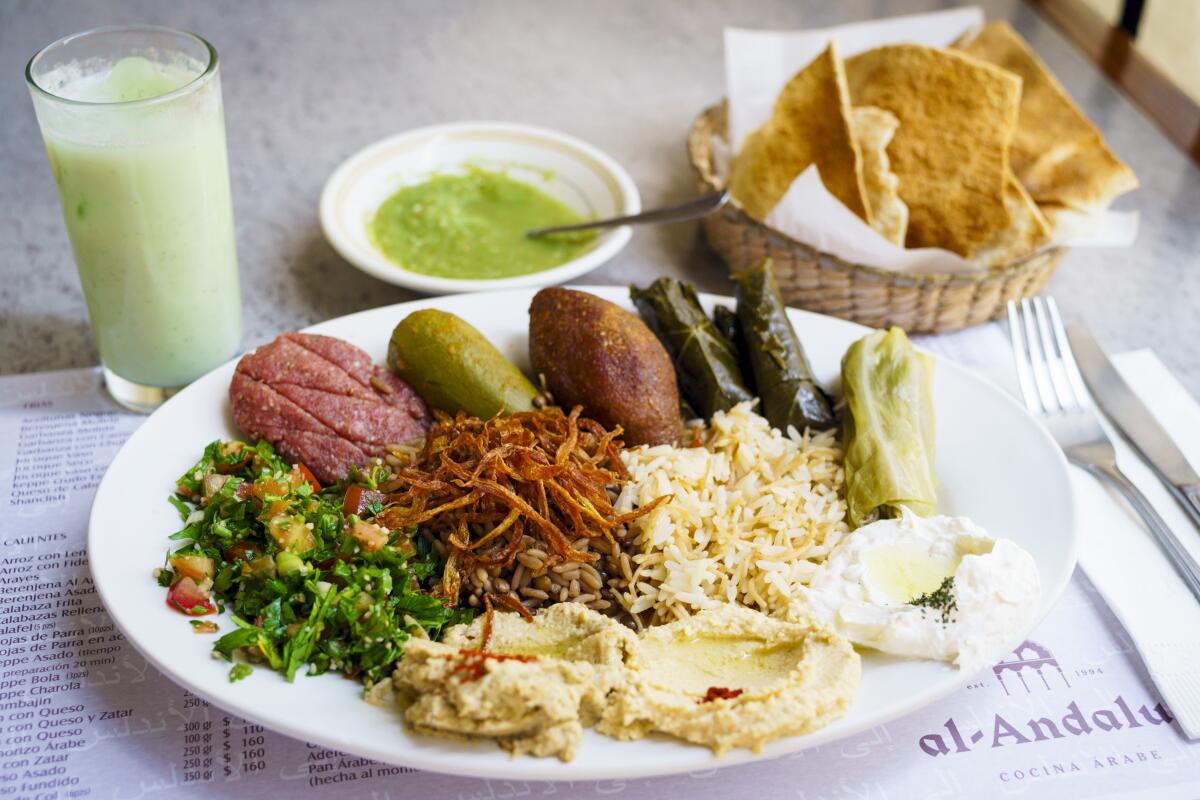
Al Andalus
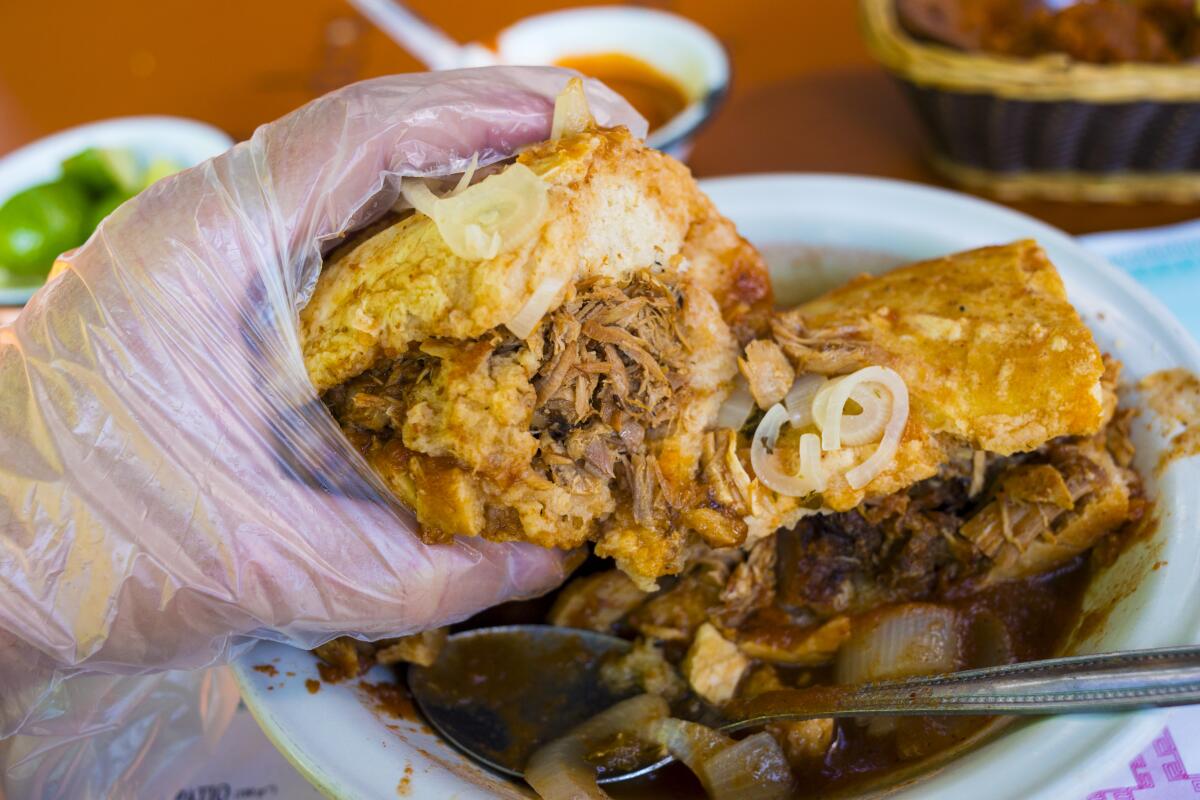
El Pialadero de Guadalajara
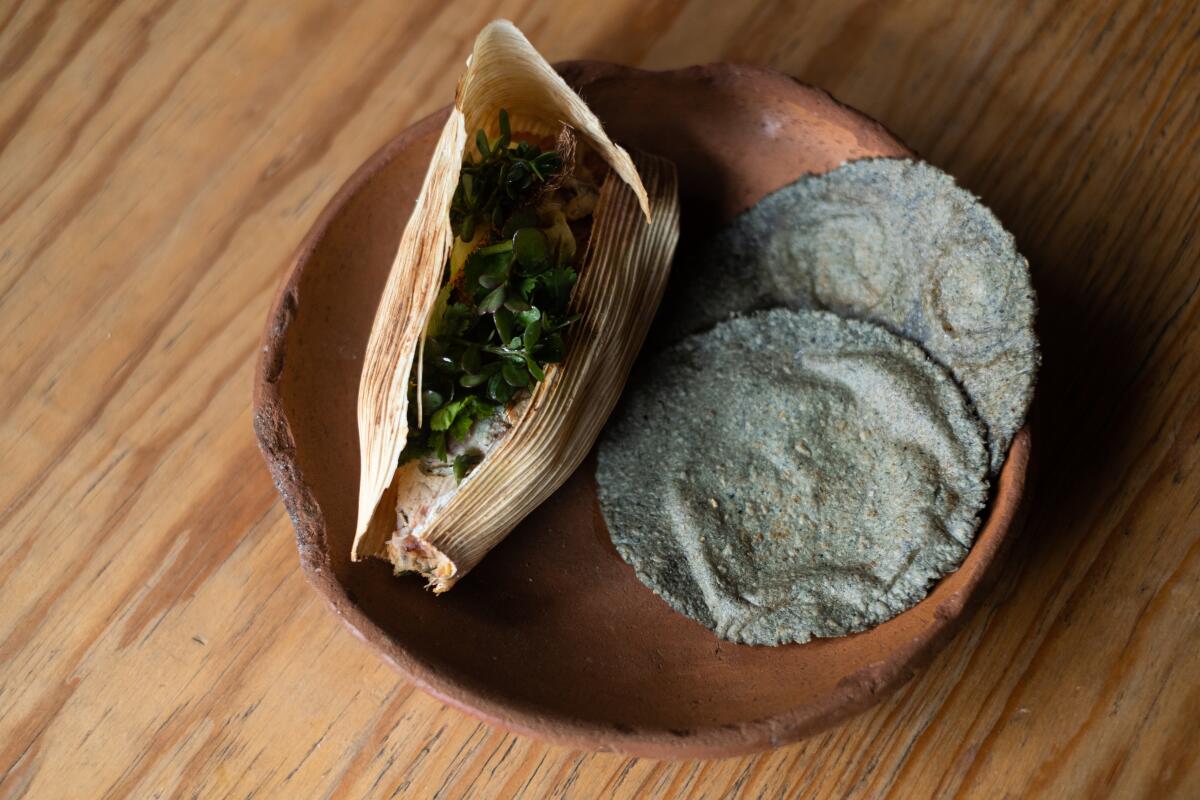
Expendio de Maíz Sin Nombre
I try to keep this recent history in mind when I ponder: In 2023, the most globally and locally admired Mexican kitchens in the city are those that treat maíz with near-religious reverence — in the land where corn was born — and employ ingredients grown at the highest standards of sustainable production. Much of this energy is found among the canals of Xochimilco, site of a resurgent movement for chinampa agriculture.
The Expendio de Maíz, another restaurant “without a name” (expendio means corner store or wholesale shop), sits squarely in this trajectory. Founded by chef Jesús Salas Tornés, the restaurant sources across the region and in the chef’s native Guerrero state. Arriving, a diner is repeatedly told the expendio has “no menu.” You must submit to whatever is brought to the table from the moment you sit. In between courses, servers will ask, with a slightly unsettling air of formality, “Are you still hungry?” There is no limit to courses, you’re told; the kitchen, painted all black and bustling right before you, is in theory infinite. So brunch may start with a quick dose of pulque blanco and then a simple tortilla molded playfully in the shape of a pig, adorned with a mound of requesón cheese.
Expendio de Maíz is a bit too self-serious for my tastes, but most diners will find themselves willingly pulled into its thought bubble for the simple splendor of its tacos, sopes, tlacoyos and whatever else Salas and team are adamant you must try.
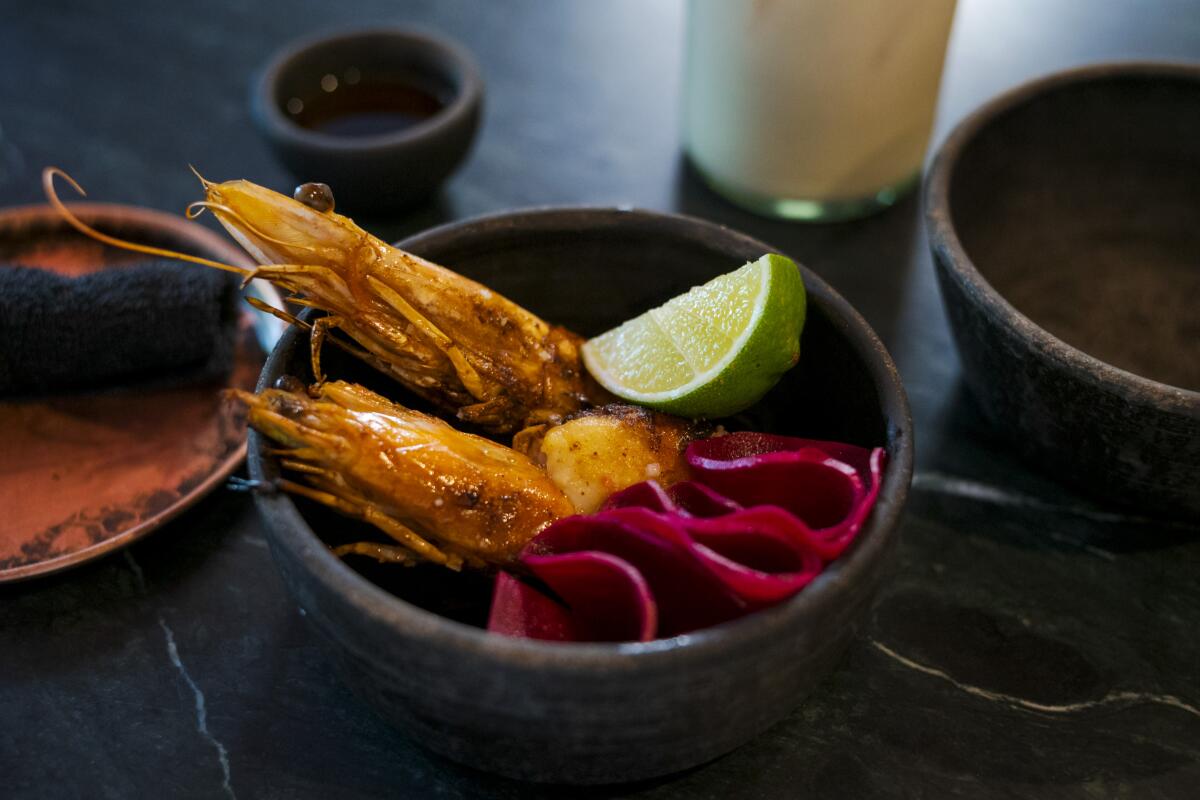
Masala y Maíz
Listman and Keval cast themselves as activist-entrepreneurs in everything they do, challenging the Mexico City status quo head-on — like when they called out the culture of corruption tolerated by all stake holders (including restaurant owners) for permits at the delegational city halls. The food itself is the star: Camarones pa’pelar come with a ghee of vanilla and chile morita, while the esquites makai pakka emerge here with the flavors of East African coconut curry. It is a fascinating treatise on how flavors migrate, meld and flourish together — a metaphor for the culinary history of Mexico itself.
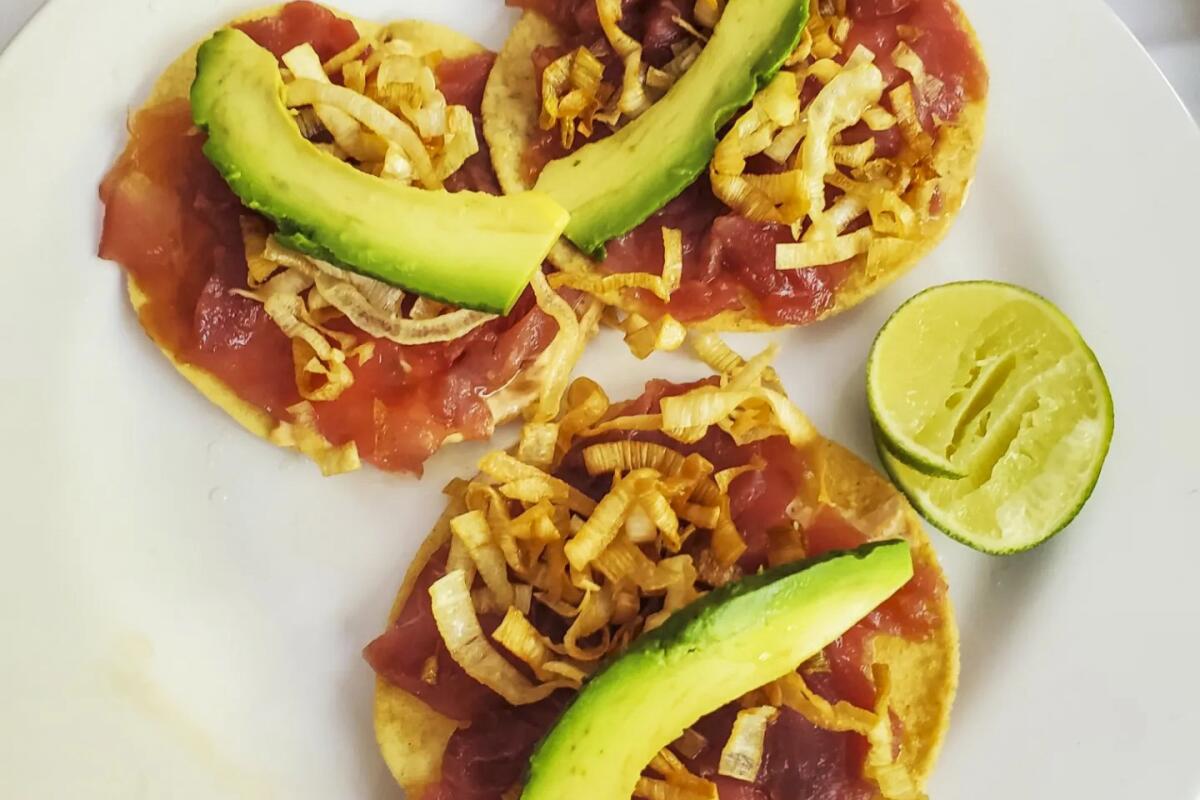
Entremar
Over time, you’d less wander in and more be pulled in. Kisses abounded. Contramar became a magnet for in-the-know events: art fairs, expositions, book launches, film premieres. More people from farther away would fly in and gamble for a seat to savor Cámara’s incredibly executed tostadas de atún and the showstopping snook a la talla, or zarandeado.
Cámara has grown her slate of restaurants and her profile; she recently popped up on my screen doing a MasterClass video on a flight I took to New York. Consequently, nabbing a table on Durango has become a quest. Bar slots are available for walk-ins, but good luck. Recently, a friend suggested I try Cámara’s outpost over in Polanco, Entremar, with the same classic menu. There are plenty of tables in a second-floor dining room overlooking the trees of Plaza Uruguay. The vibe is refreshingly less sceney or competitive than on Durango. You can lounge again with Cámara’s food. If you have three or more at the table, order the zarandeado upon sitting. And maybe a mezcal negroni?
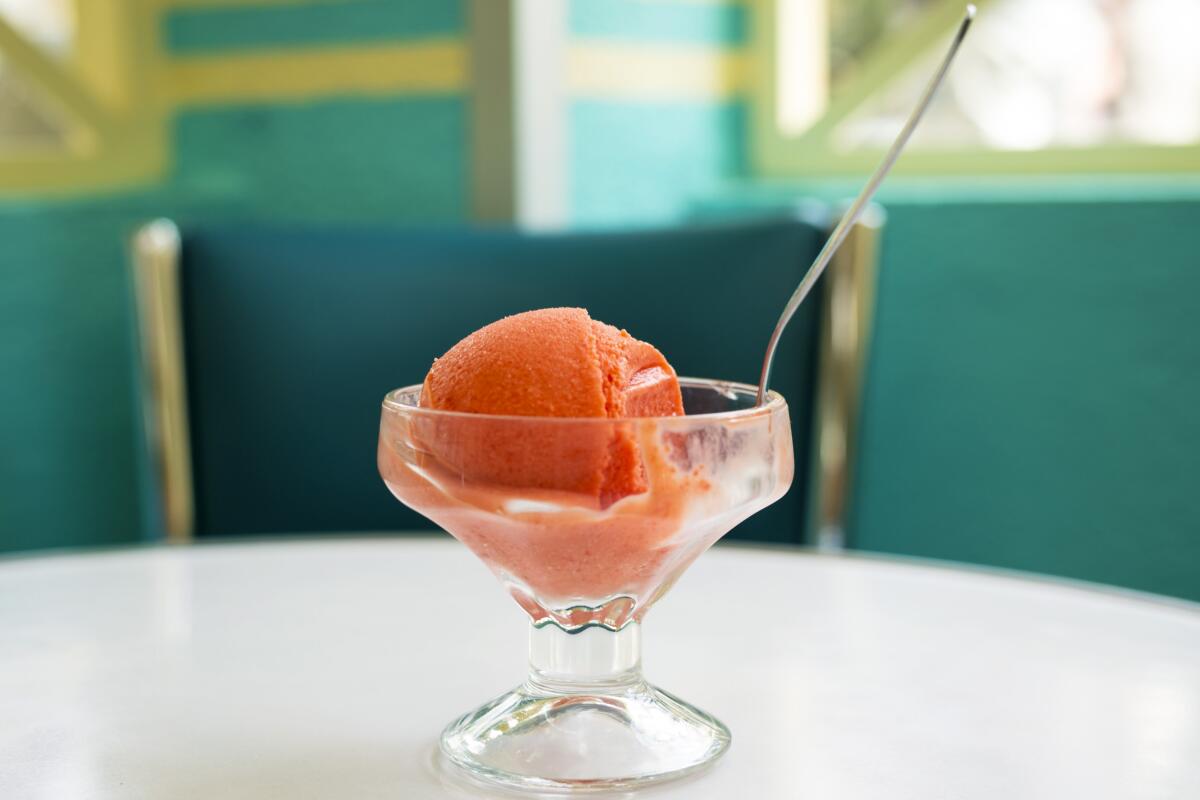
Nevería Roxy
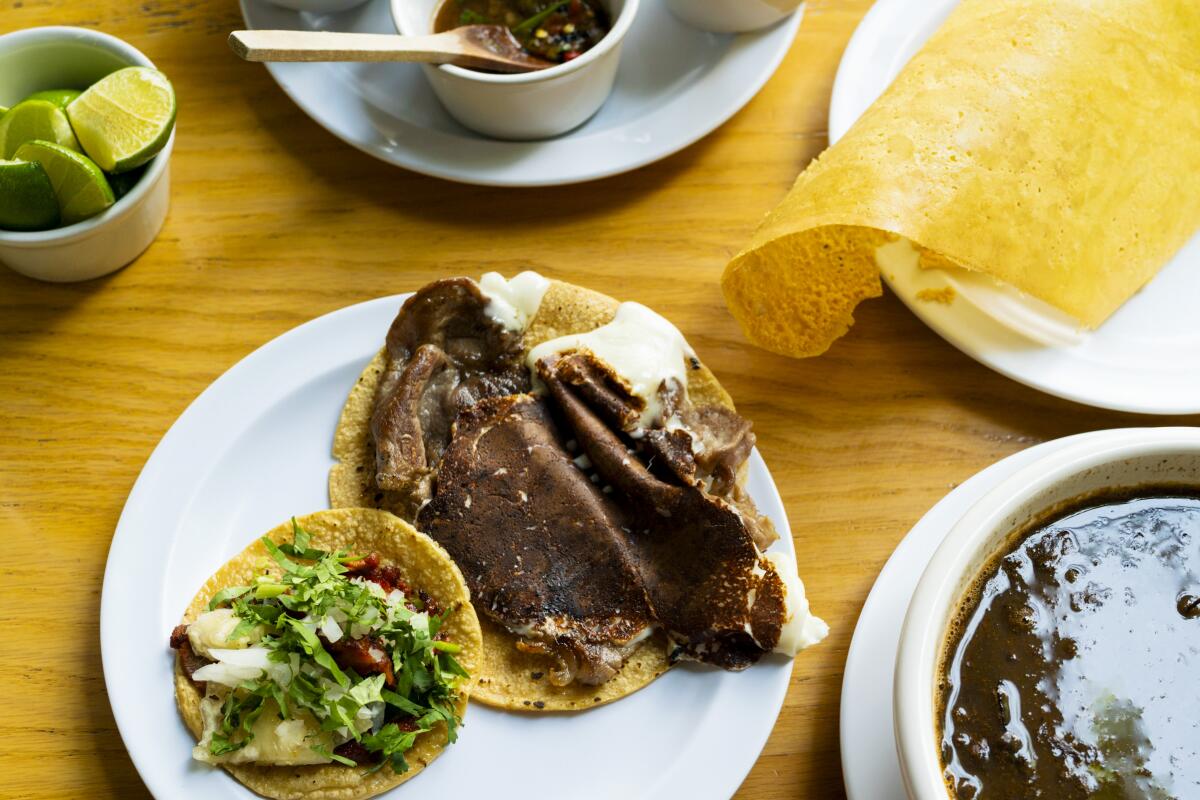
El Califa
Years later Califa is going strong and still reliable as the original fast-yet-upscale taquería with Mexico City classics: al pastor, costilla (I get mine with cheese), frijoles de la olla, jugo de carne and my all-time favorite appetizer anywhere, chicharrón de queso, which was popularized here. This is basically a slathering of melty cheese on a griddle, toasted as a sheet until just before burning, scraped off in one piece and molded into an extravagant cylinder as it cools. Snap into it, break its form and crunch away. Multiple locations.
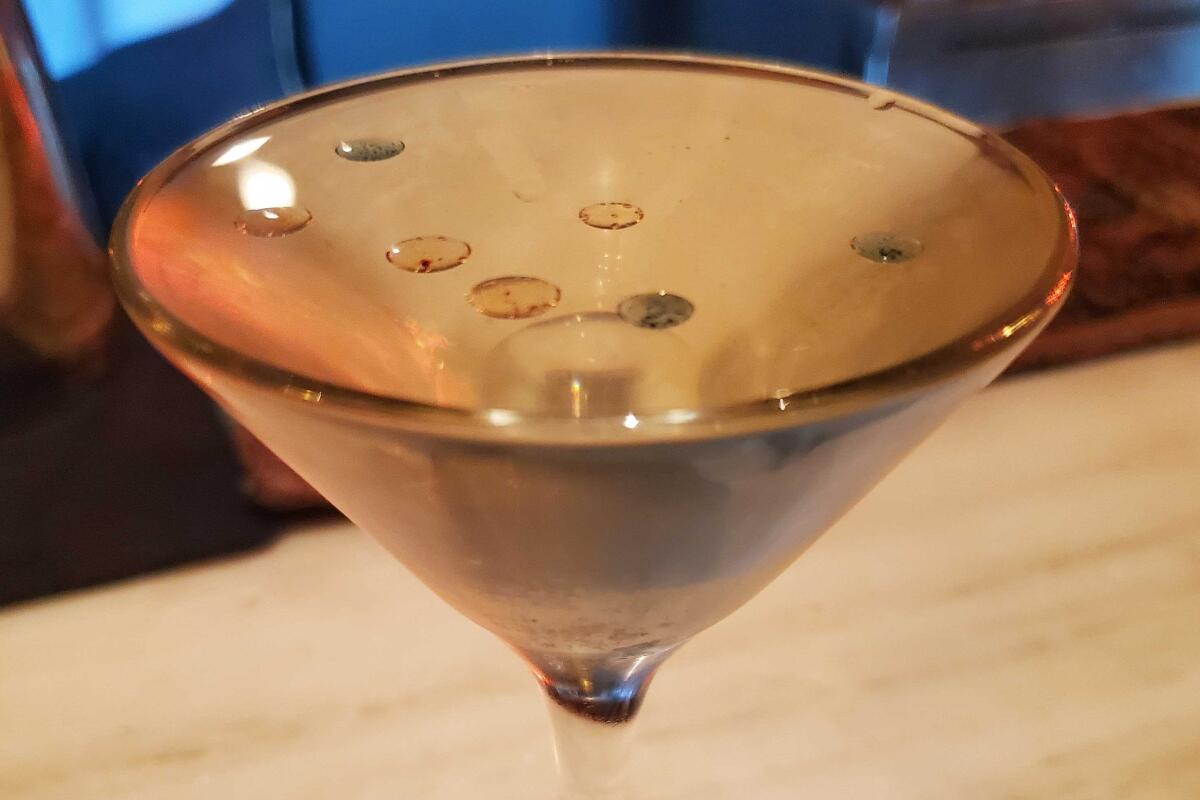
Hanky Panky
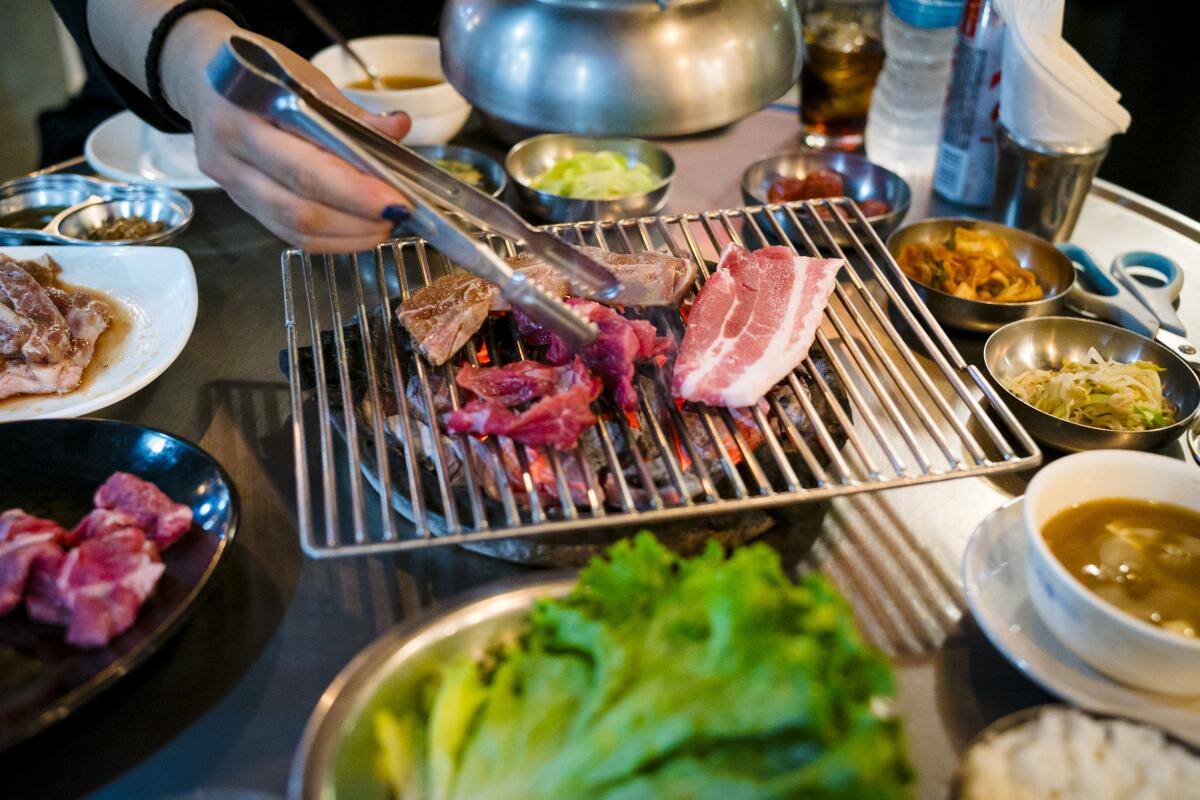
Nadefo
An L.A. visitor reared on our Koreatown barbecue might not want to go out for it here, or anywhere else, on a tight trip. However, I highly recommend established favorite Nadefo for an enlightening peek into casual Korean Mexican family-style dining. The cooking here happens over mesquite coals, brought to the table while crackling hot. The added depth of flavor on your orders of beef costilla and tocino will be unmistakable. When a powerful smoking moment happens on the grill, staff maneuver ventilation intake tubes hovering just overhead at full power. All the satisfying banchan are laid out before you, and you can order Korean beer and spirits. Does Nadefo equal or rival the dining of Koreatown in Los Angeles? I’d like to hear from Angelenos, but for now, my stance is yes.
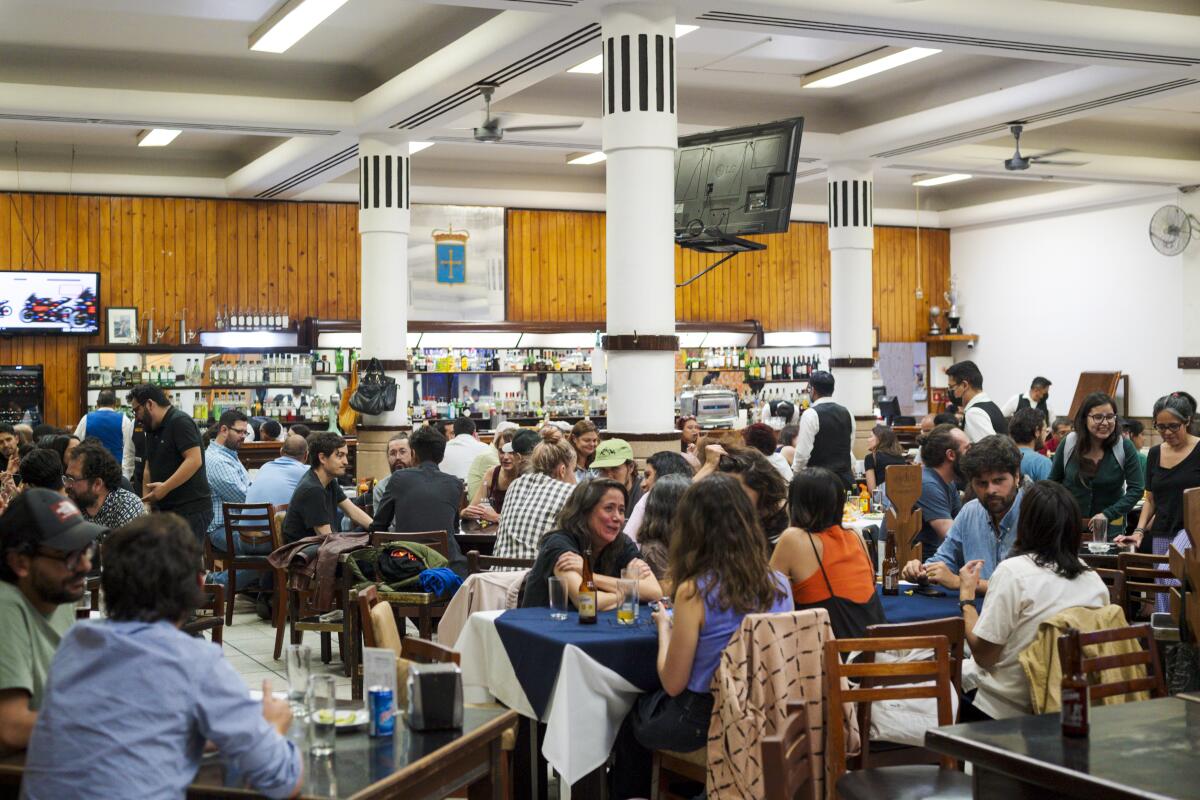
Covadonga
Foodwise, this is classic Spanish and Mexican fare like tortilla española and a house favorite, the sopa azteca. Tortas are great. The play here is to drink and be merry with tequila straight-up and the “little flag” of lime and tomato juice on the side. (My go-to sipping tequila inside Mexico among the mainstream labels is Herradura blanco, which somehow has a stronger cinnamon note than the Herradura blanco manufactured for the United States.) There are private banquet rooms in the rear and upstairs — I’ve been to multiple anniversaries and birthdays here — and it’s great in the daytime to watch a game of fútbol. Our Vice Mexico office all-team “lunches” at the Covadonga during World Cup tourneys became legendary.
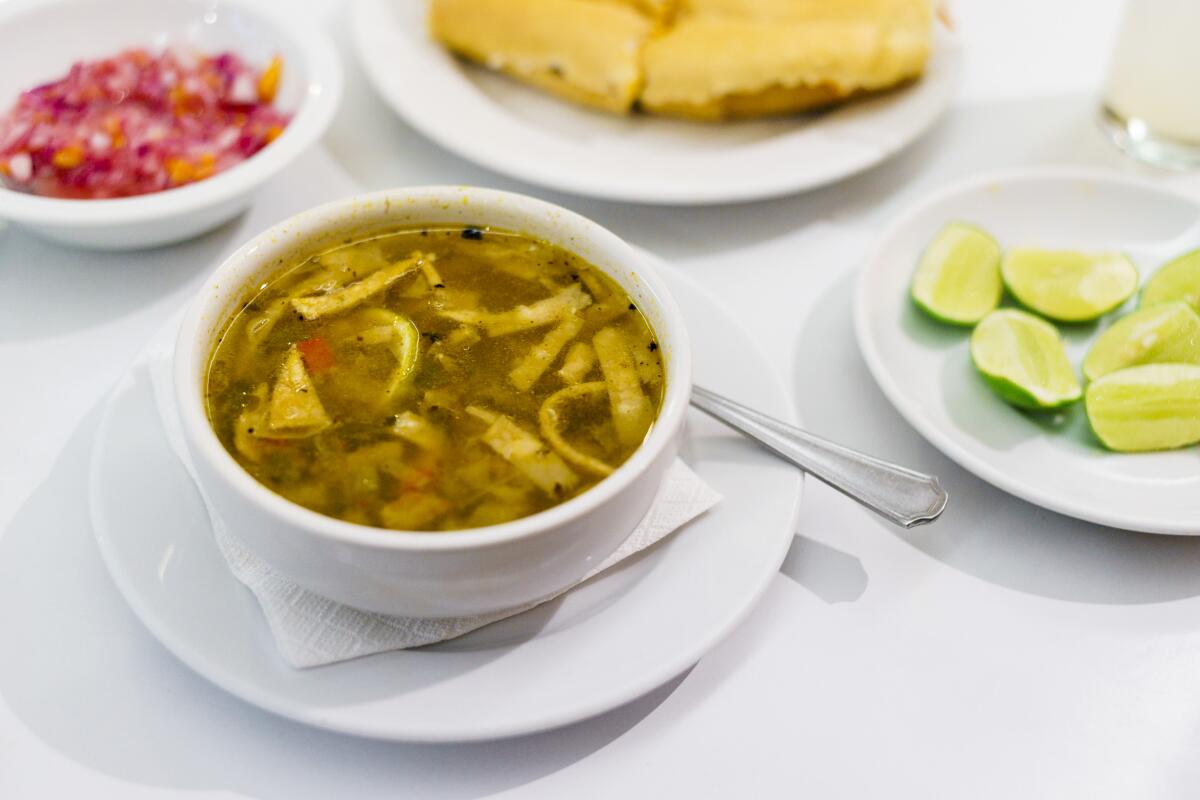
Xel-Há
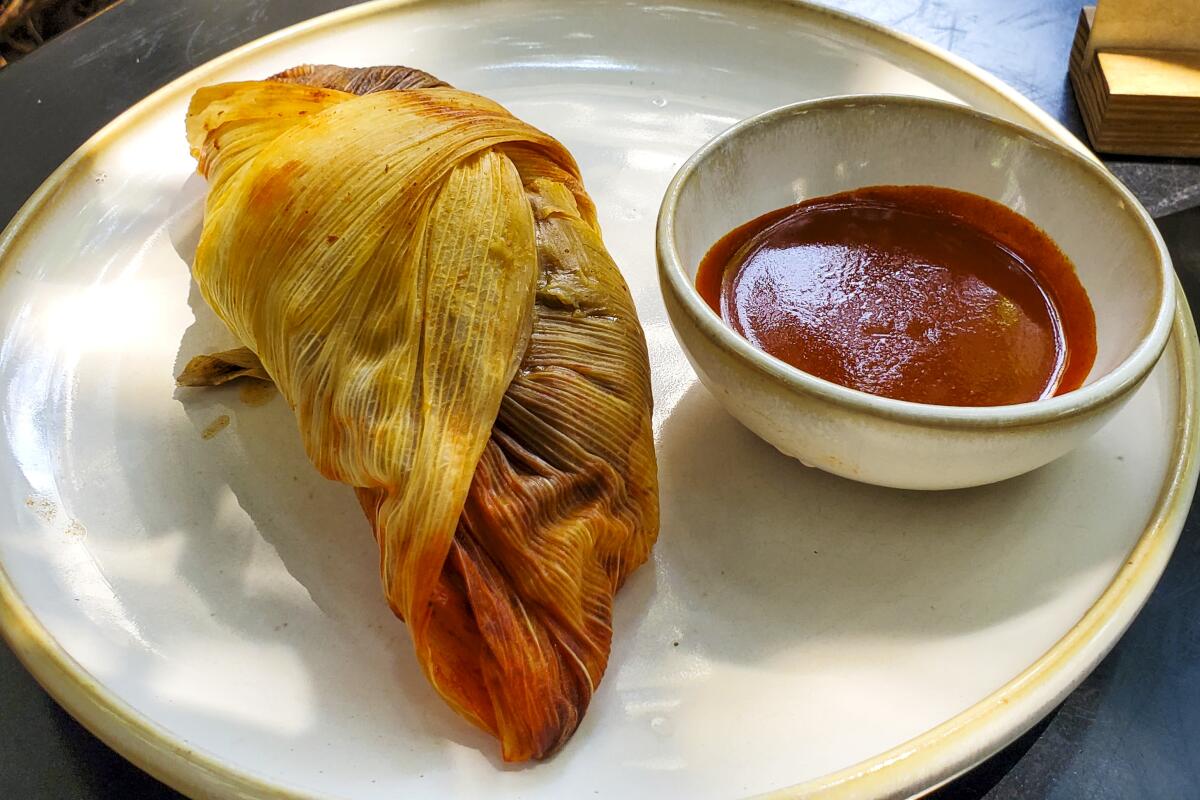
Molino 'El Pujol'
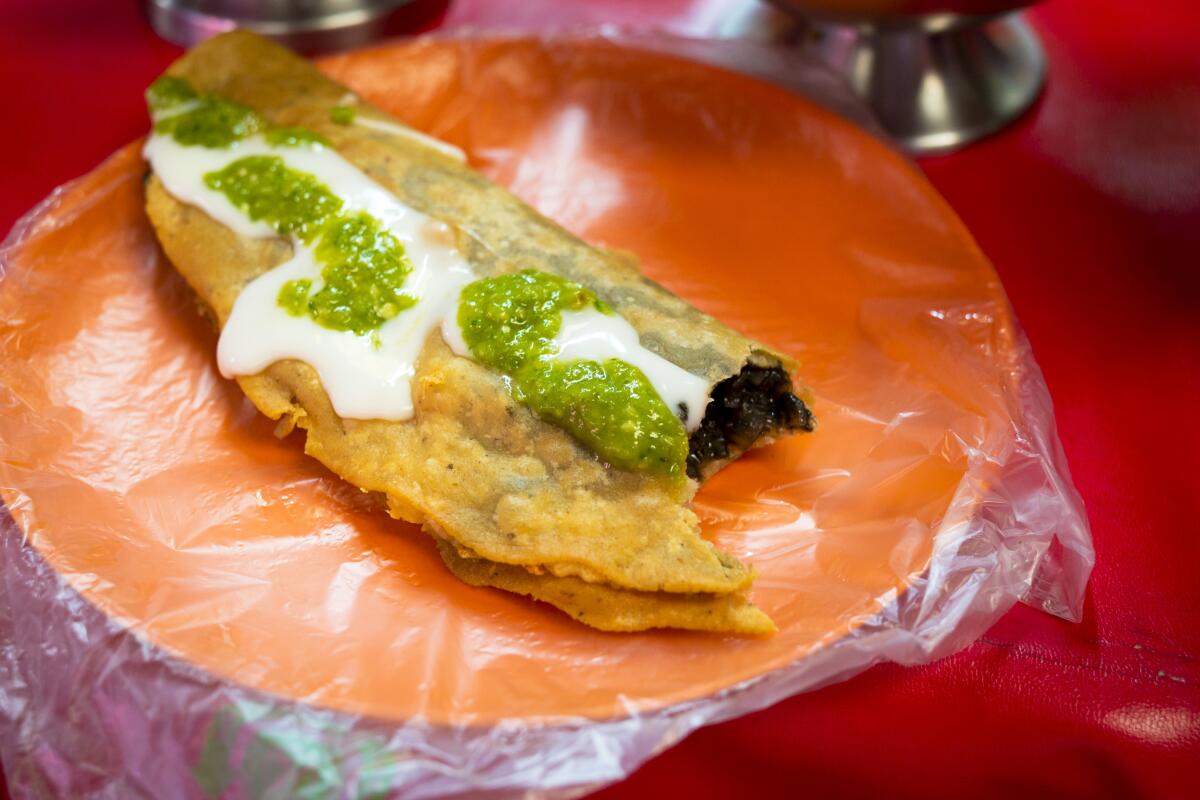
Mercado de Comida de Coyoacán
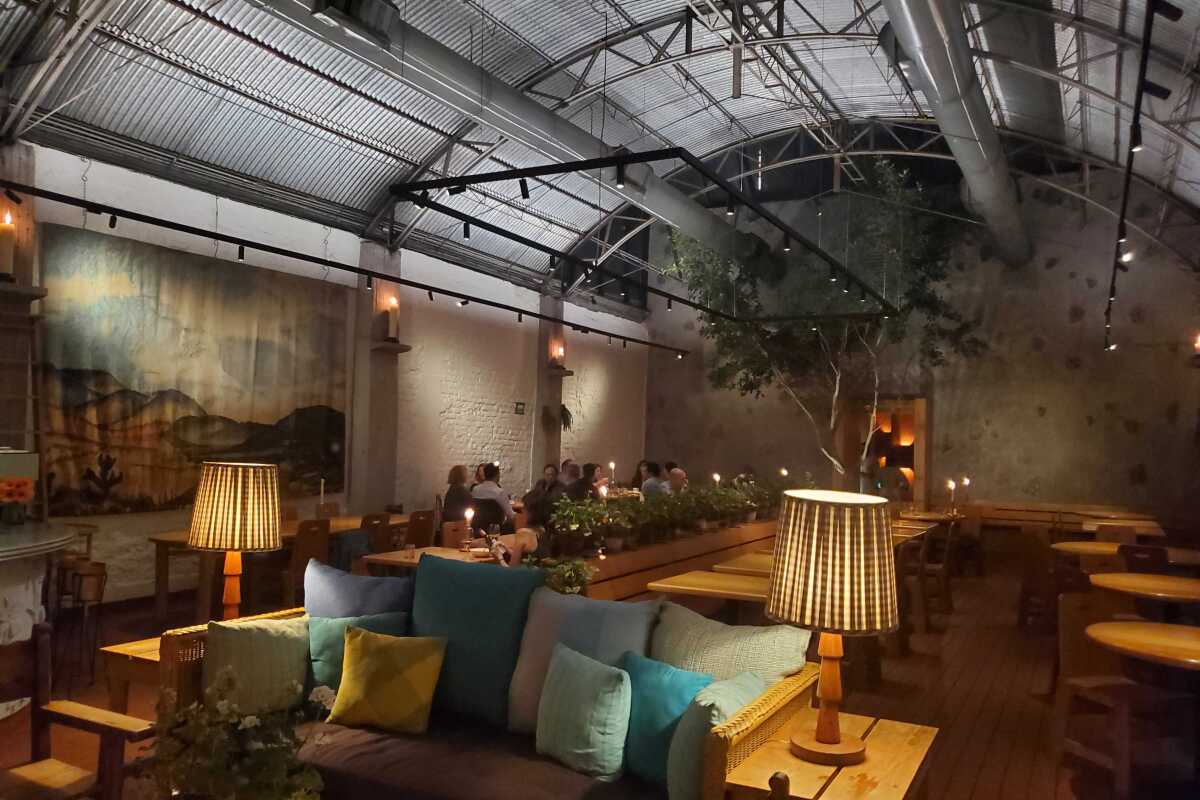
Máximo Bistrot
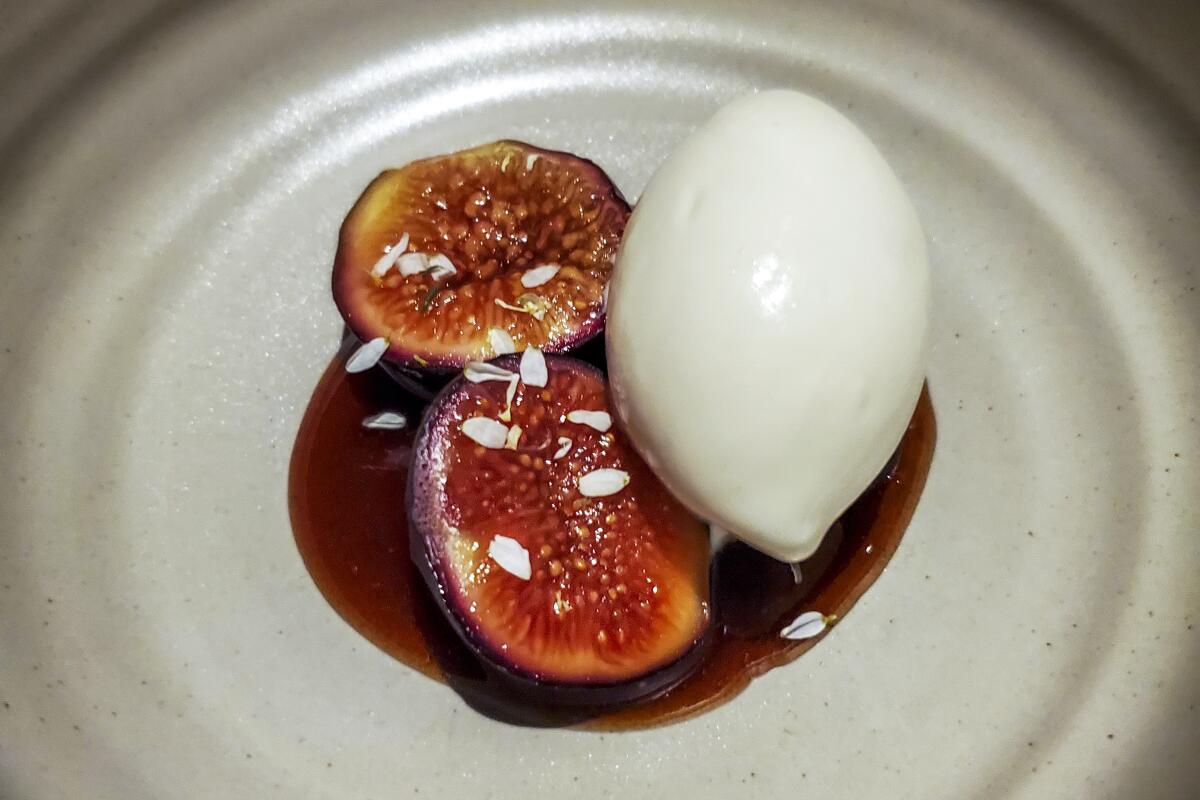
Pujol
Olvera has been repeatedly named one of the best chefs in the world, has opened restaurants in New York and Los Angeles, published books and just seems to loom large over everyone else. His new nearby late-night mezcal spot, Ticuchi, is also a growing star. Although I can sense some exasperation in the air over all of Olvera’s successes, it is hard to deny he’s still riding high on a crescendo of excellence. The chef’s devotion to local ingredients, sustainable sourcing and equitable partnerships has not wavered. And all of it culminates in a nightly display of standard-setting cooking and service at Pujol. Serious yet playful, gregarious yet minimalist, it retains its crown — or let’s say, penacho — as the best restaurant in Mexico City.
Eat your way across L.A.
Get our weekly Tasting Notes newsletter for reviews, news and more.
You may occasionally receive promotional content from the Los Angeles Times.


